Browse our Growing Library of Success Stories
By:
Steve Stuebner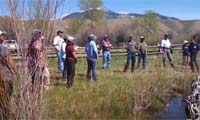 See how Lemhi ranchers and conservation professionals work together to achieve a number of milestones related to fish and wildlife habitat, water conservation, minimum stream flows, winter fish survival and more through careful advance planning, respect for multiple uses, and a clear focus on conservation and community goals.
See how Lemhi ranchers and conservation professionals work together to achieve a number of milestones related to fish and wildlife habitat, water conservation, minimum stream flows, winter fish survival and more through careful advance planning, respect for multiple uses, and a clear focus on conservation and community goals.
By:
Washington Policy Center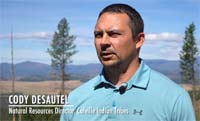 This video from Washington Policy Center with cooperation from the Confederated Tribes of the Colville Reservation, sheds light on how the tribes manage forests to be more healthy using commercial harvests, thinnings, and controlled burns to deal with the pressures of insect infestation, climate change, and decades of fire suppression.
This video from Washington Policy Center with cooperation from the Confederated Tribes of the Colville Reservation, sheds light on how the tribes manage forests to be more healthy using commercial harvests, thinnings, and controlled burns to deal with the pressures of insect infestation, climate change, and decades of fire suppression.
By:
Steve Stuebner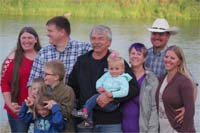 Before knowing much about land trusts, Ashton farmer John Nedrow thought they were some kind of sinister force seeking to take over his farm and force landowners off their property.
Before knowing much about land trusts, Ashton farmer John Nedrow thought they were some kind of sinister force seeking to take over his farm and force landowners off their property.
“Back then, I thought they were the enemy,” Nedrow said in an interview on his alfalfa and malt-barley farm, which straddles the banks of the famed Henrys Fork River, a blue-ribbon trout stream. “I thought they wanted to turn this whole area into national park.”
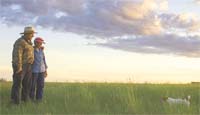 Their introduction to holistic ranch management techniques called into question long-held, traditional ways of thinking. The drastic changes that followed required a leap of faith for the fourth-generation ranchers. They traded harvesting hay for grazing methods that let their cattle harvest the forage themselves. Such changes didn’t happen overnight, and each came with its own risk and learning curve.
Their introduction to holistic ranch management techniques called into question long-held, traditional ways of thinking. The drastic changes that followed required a leap of faith for the fourth-generation ranchers. They traded harvesting hay for grazing methods that let their cattle harvest the forage themselves. Such changes didn’t happen overnight, and each came with its own risk and learning curve.
By:
Steve Stuebner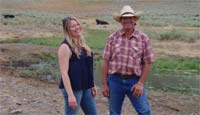 Extensive outreach by Pioneers Alliance conservation partners and ground-breaking research on antelope migration patterns, funded by the Lava Lake Institute for Science and Conservation and Wildlife Conservation Society, has led to the protection of approximately 94,000 acres of private ranchland rich with wildlife values particularly for sage grouse and antelope.
Extensive outreach by Pioneers Alliance conservation partners and ground-breaking research on antelope migration patterns, funded by the Lava Lake Institute for Science and Conservation and Wildlife Conservation Society, has led to the protection of approximately 94,000 acres of private ranchland rich with wildlife values particularly for sage grouse and antelope.
By:
Steve Stuebner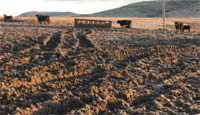
Over 16 Idaho County ranchers signed up to install BMPs
In the beautiful rolling draws and hills of North Idaho’s Camas Prairie, numerous Idaho County cattle ranchers are stepping up to install a host of best management practices on cattle wintering grounds to get their livestock out of the mud and improve water quality in Red Rock Creek, Cottonwood Creek and the South Fork of the Clearwater River.
By:
Steve Stuebner
Like many ranchers, Mayfield rancher Jeff Lord watches for opportunities to improve the public range where his cattle graze.
Following the 280,000-acre Pony-Elk Complex wildfires in 2013, Lords partnered with state and federal agencies to assist with range-rehabilitation projects in the Danskin Mountains.
By:
K. Gregg Elliott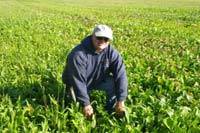 Like almost everyone else in his rural community, Gabe had been farming and ranching using conventional methods since purchasing his Brown’s Ranch from the parents of his wife Shelly in 1991. Possibly because he had not grown up on a farm, Gabe found that he was constantly asking the question, “why do we do things this way?”
Like almost everyone else in his rural community, Gabe had been farming and ranching using conventional methods since purchasing his Brown’s Ranch from the parents of his wife Shelly in 1991. Possibly because he had not grown up on a farm, Gabe found that he was constantly asking the question, “why do we do things this way?”
By:
Northwest Florida Water Management District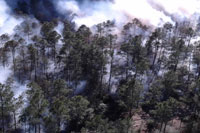 On March 2, 2018, a large prescribed burn occurred at the Yellow River Water Management Area in Santa Rosa County, Florida, which is managed by the Northwest Florida Water Management District. Weather and atmospheric conditions were ideal and resources were available for the Florida Forest Service to approve the burn permit. Aerial ignition via helicopter started the fire systematically across the landscape. Ground firing and monitoring crews, consisting of 15 personnel were stationed at the tract perimeter as ground support during the burn.
On March 2, 2018, a large prescribed burn occurred at the Yellow River Water Management Area in Santa Rosa County, Florida, which is managed by the Northwest Florida Water Management District. Weather and atmospheric conditions were ideal and resources were available for the Florida Forest Service to approve the burn permit. Aerial ignition via helicopter started the fire systematically across the landscape. Ground firing and monitoring crews, consisting of 15 personnel were stationed at the tract perimeter as ground support during the burn.
By:
USDA Forest Service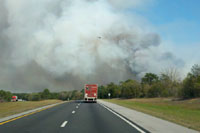 Over four long days in late March 2011, the most severe wildfire outbreak in a decade occurred at Eglin Air Force Base, located near Destin, Florida (Fig. 1). A persistent drought, 20 mph winds and low humidity, combined with 12-15 arson fires on the property, resulted in 6,000 acres burned in a matter of days. Due to Eglin’s aggressive prescribed fire program, the March 2011 wildfire severity and acres burned were significantly reduced. Without this regular fuel reduction, anywhere from 10-12,000 acres could have burned just on the Eglin side, with untold acres burned and property damaged north of Interstate 10.
Over four long days in late March 2011, the most severe wildfire outbreak in a decade occurred at Eglin Air Force Base, located near Destin, Florida (Fig. 1). A persistent drought, 20 mph winds and low humidity, combined with 12-15 arson fires on the property, resulted in 6,000 acres burned in a matter of days. Due to Eglin’s aggressive prescribed fire program, the March 2011 wildfire severity and acres burned were significantly reduced. Without this regular fuel reduction, anywhere from 10-12,000 acres could have burned just on the Eglin side, with untold acres burned and property damaged north of Interstate 10.
By:
US Forest Service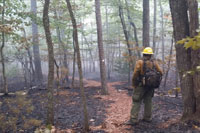 On July 14, 2015, a lightning strike ignited a wildfire on Bald Knob in the Grandfather Ranger District (GRD) of the Pisgah National Forest. Only 30 miles outside of Asheville, North Carolina and on rugged terrain difficult to access, the wildfire may have posed greater threat had it not been adjacent to areas containing recent fuel treatments (prescribed fire) and wildfires. These treatments, as part of the Collaborative Forest Landscape Restoration Program (CFLRP), reduced fire fuel loads in the forest and enabled the Bald Knob fire to safely burn while protecting firefighters, local residents, structures, power line corridors, communication towers, and Forest Service property and surrounding land. Fuel treatments positively influenced the fire’s spread and allowed firefighting efforts to truly focus on protection of private properties. The inaccessible terrain as well as the confine and contain strategy allowed ample time to keep the effected community well informed of current fire behavior, smoke impacts and management plans for the fire.
On July 14, 2015, a lightning strike ignited a wildfire on Bald Knob in the Grandfather Ranger District (GRD) of the Pisgah National Forest. Only 30 miles outside of Asheville, North Carolina and on rugged terrain difficult to access, the wildfire may have posed greater threat had it not been adjacent to areas containing recent fuel treatments (prescribed fire) and wildfires. These treatments, as part of the Collaborative Forest Landscape Restoration Program (CFLRP), reduced fire fuel loads in the forest and enabled the Bald Knob fire to safely burn while protecting firefighters, local residents, structures, power line corridors, communication towers, and Forest Service property and surrounding land. Fuel treatments positively influenced the fire’s spread and allowed firefighting efforts to truly focus on protection of private properties. The inaccessible terrain as well as the confine and contain strategy allowed ample time to keep the effected community well informed of current fire behavior, smoke impacts and management plans for the fire.
By:
Brianna Randall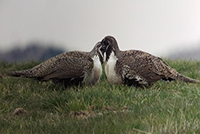 The Idaho Sage Grouse Action Team is a prime example of how neighbors are working together to achieve unprecedented conservation success for people and wildlife across the range.
The Idaho Sage Grouse Action Team is a prime example of how neighbors are working together to achieve unprecedented conservation success for people and wildlife across the range.
By:
Brianna Randall Cooperating with USDA, young ranchers improve the land for both sage grouse and cattle
Cooperating with USDA, young ranchers improve the land for both sage grouse and cattle